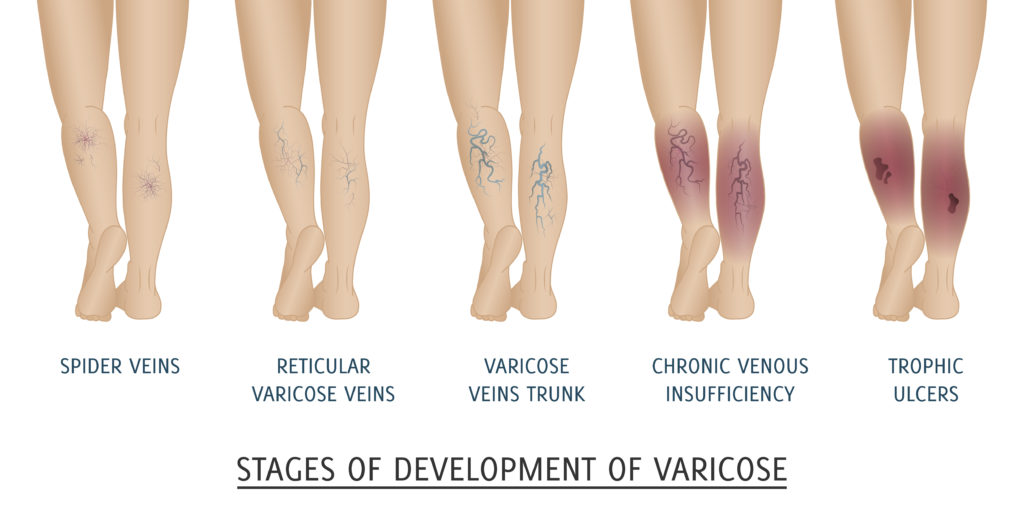From surface-level discoloration and blemishes to constant pain or discomfort, our team will resolve your venous disease symptoms at the source, thereby restoring your comfort, enhancing your wellness, and rejuvenating your confidence.

Sclerotherapy
Sclerotherapy is most commonly used to treat spider veins, or veins wherein stagnated blood flow causes them to appear as dark blue and/or purple webs across the skin. This treatment involves the injection of a sclerosant, or chemical irritant, to interact with the vein walls and prompt them to collapse. Once the vein has been closed, the blood will naturally reroute itself to the healthier veins nearby.
Sclerotherapy commonly requires two to five sessions in total. Otherwise, patients will reap the benefits of minimal downtime, no scarring, and long-lasting results.
RF Ablation
RF ablation, short for radiofrequency ablation, is a safe and clinically-reliable thermal method for eliminating superficial venous disease occurring within the greater and/or shorter saphenous veins. By ablating (or collapsing) the veins using radiofrequency energy, RF ablation achieves the rerouting of blood flow in a manner similar to that of sclerotherapy.
This treatment is sometimes combined with sclerotherapy and ultrasound vein mapping.
Deep Venous Disease Diagnosis & Treatment
On the rare occasion a patient undergoes any of the aforementioned venous treatment and still finds they are not satisfied with the result(s), their physician may need to assess their deep venous system.
If further treatment is deemed necessary, the physician will inject a contrast dye into both femoral veins and use a vascular ultrasound to determine the underlying cause of the continuing condition(s) and symptoms.
Angioplasty and/or stenting may follow once the next treatment course is determined.
Ultrasound Studies
Ultrasound scanning, also referred to as “sonography,” is the process by which a physician utilizes high-frequency sound waves to non-invasively generate a vascular map of the patient. This identifies areas of stagnation and blockage, as it tracks the patient’s blood flow in real-time.
Aside from diagnostic purposes, ultrasound may also be used to guide the placement of a catheter or needle, to aid the stenting process, and more.